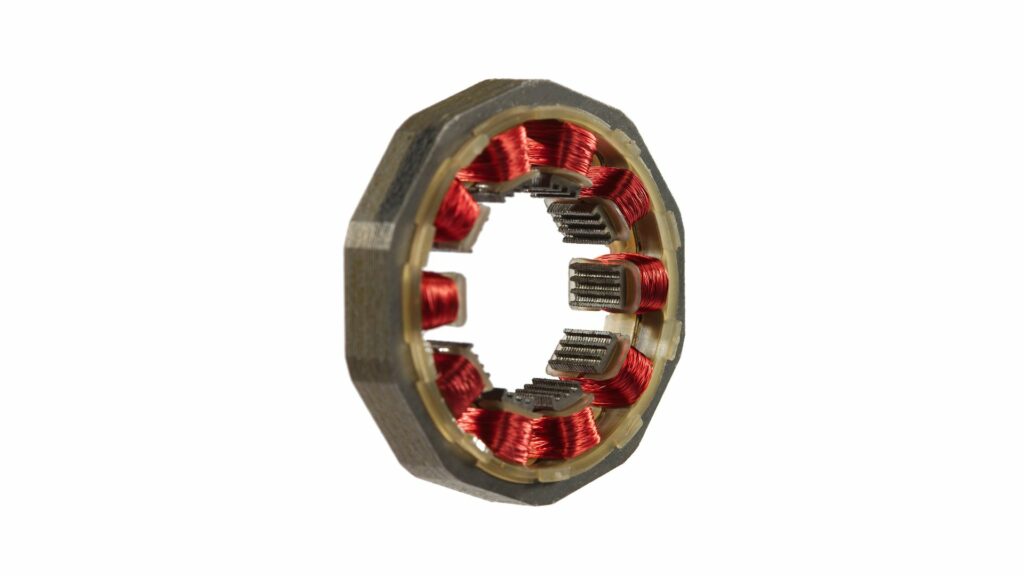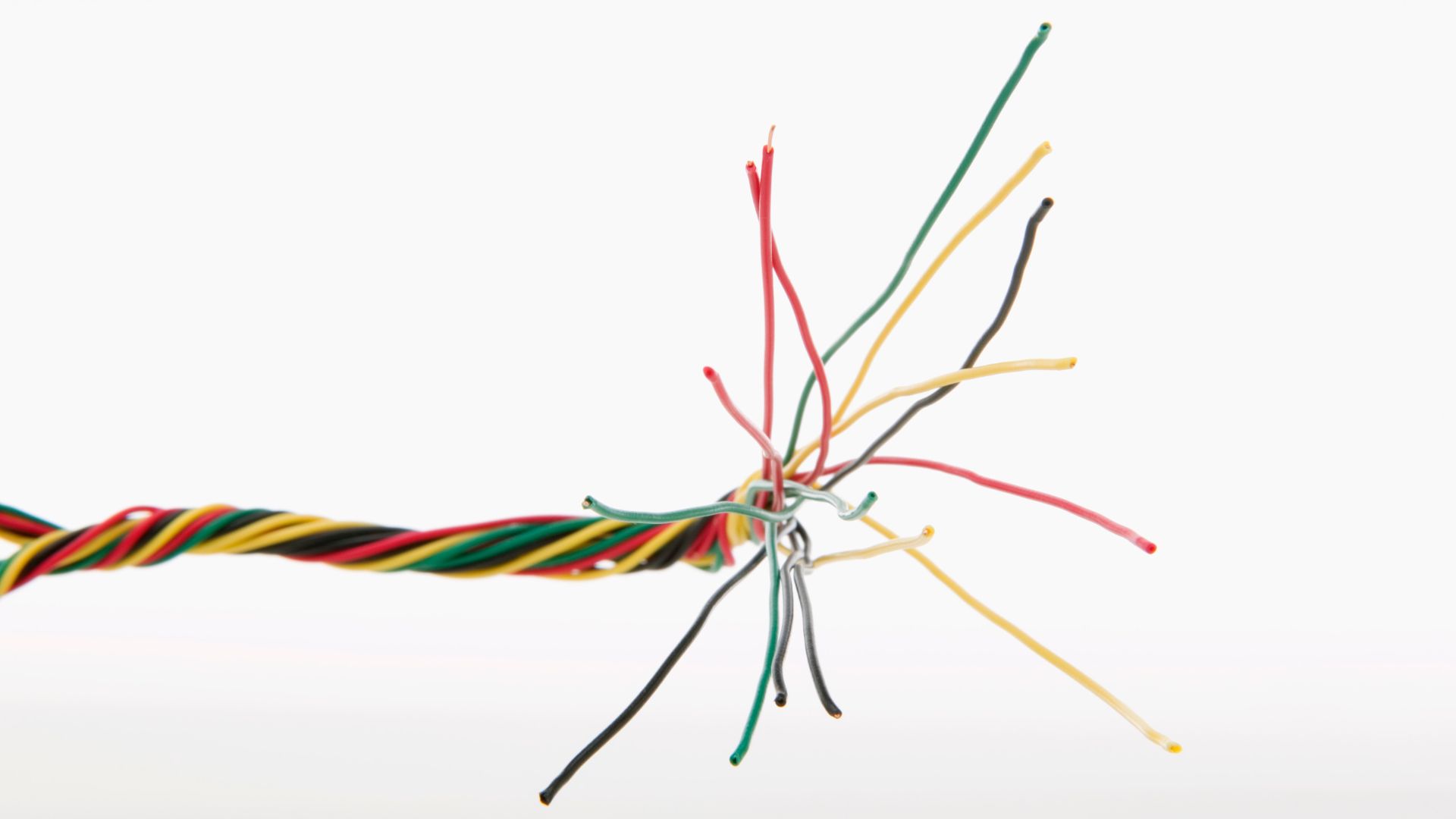22-gauge wires are tiny. In fact, many contractors ignore sizes smaller than 18AWG. Gauges in the 20s and beyond don’t serve a significant purpose in residential or commercial settings. The average 22AWG line has the following attributes:
- Diameter (Inches) – 0.0253 inches
- Diameter (mm) – 0.644mm
- Cross-section (mm2) – 0.326mm2
- Amps – 7 amps (75 degrees C).
22AWG VS 20AWG
Even though 22AWG and 20AWG are within the same range, 22AWG would make a poor replacement for 20AWG. 20AWG carries 11 amps at 75 degrees C, which is four amps more than 22AWG can transmit at the same temperature range.
You can add 20AWG to an application requiring 22AWG, but the reverse is unsafe unless you limit the application’s electrical draw to 7 amps or less. Then again, 20AWG can only carry 5 amps at 60 degrees C, which puts the gauge within a 22-gauge wire’s capacity.
22AWG VS 24AWG
24AWG is even thinner than 22AWG and can only transmit 3.5 amps at 75 degrees C. That figure falls to 2.1 amps at 60 degrees C. Either way, you can replace 24AWG with 22AWG if the need arises.
Naturally, you are better off sticking with 22AWG, especially if the application calls for this wire size. The temperature range gives you some leeway because it changes the wire’s ampacity. Some people will gravitate towards 24AWG because the gauge is cheaper than 22AWG and 20AWG.
Pros & Cons Of Using 22 Gauge Wire
Cons
Electricians ignore 22AWG because it is plagued with weaknesses, especially when you compare it with thicker wires. For instance:
- 22AWG doesn’t carry enough current to run conventional residential appliances.
- The wire is more likely to overheat.
- The size will generate a bigger voltage drop.
Pros
Many engineers and electricians use 22AWG despite its limitations because the size has advantages you won’t see in thicker wires. For instance:
- The small cross-section makes the wire much easier to bend than thicker wires.
- 22AWG is one of the cheapest sizes on the market.
- The lines can fit in small holes. You don’t need to waste money on large conduits (if you need them) to accommodate 22AWG. 22AWG can work with small terminals.
- 22AWG is light, flexible, and so much easier to bend. This simplifies installation.
- A solid 22-gauge wire will hold the shapes you create when you bend it.
- Some 22AWG cords have abrasion resistance. You can pull them across rough surfaces without causing permanent damage. You can also buy 22-gauge lines with jackets that repel corrosive chemicals.
- They don’t occupy that much space.
Uses of 22 Gauge Wire
Don’t dismiss 22AWG as a useless gauge. Yes, it can’t run your kitchen or laundry appliances. However, it has plenty of uses, including the following:
1). According to Rolling Stone, 22AWG is a great option for LED lights. 20AWG is better because it has a lower resistance. However, 22-gauge wiring is a decent alternative. LED strips are an appealing application because the technology is efficient.

First of all, they produce little or no heat. Secondly, their efficiency allows LEDs to generate bright lights while using only a few watts. Therefore, LEDs are less likely to overload thin 22AWG wires.

2). 22AWG is a fitting motor winding wire. You find it in various types of alternators. Engineers use it to create magnetic coils.

3). You can find 22AWG conductors in everything from cars and boats to trailers and motorcycles. The wires are small enough to fit small applications in moving vehicles.
4). Like vehicles, you will find 22AWG in small devices and applications in robots. Contractors call these tiny conductors micro M12 cords.
5). 22AWG can carry audio and video information in speakers, TVs, home theater systems, etc. Many coaxial and ethernet cords are 22-gauge because the size is small enough to fit those tiny terminals.
People dismiss 22-gauge wiring without realizing that it appears in many of the devices they use daily.
Things That Affect 22 Gauge Wire Amp Rating
Even though 22AWG is tiny, you must apply caution while selecting the size because the following factors tend to influence the wire’s amp rating:
1). Temperature Rating
The biggest threat to your home is a wire’s resistance. A high resistance increases the heat a wire generates. That heat can melt the insulation and start a fire if you’re not careful. Many laypeople expect fires to start because excess electricity is flowing through a small line.
They don’t fully appreciate the critical role temperature plays in this equation. According to BBC, a high temperature will increase the resistance by elevating the number of collisions between the ions and free electrons.
If you’ve ever wondered why manufacturers make wires with different temperature ratings, this is the reason. A higher temperature rating allows a 22AWG cable to withstand more current without overheating. Therefore, a wire size chart will associate the line with a higher ampacity.
A lower temperature rating is the opposite. The wire has a lower ampacity because it can’t tolerate high temperatures, especially when you exceed its amperage. In the case of 22AWG, the cable can withstand 3 amps at 60 degrees C and 7 amps at 75 degrees C.
As you can see from this ampacity chart, the amps rise and fall in step with the temperature rating.
2). Stranded VS Solid Wire
Solid wires have a higher current-carrying capacity than stranded wires. However, this rarely influences a contractor’s decision. They will use solid wire because it has numerous benefits. For instance, it is cheaper and boasts anti-corrosive and weather-resistance properties.
On the other hand, stranded wires are more flexible. Additionally, they have less attenuation. The amp rating is not a significant factor in a debate regarding these two options.
3). Material
The amp rating changes with the material because copper is more conductive than aluminum. Therefore, it can transmit more amps without overheating. Again, a wire size chart reflects this information.
A 22AWG copper wire has a higher amp rating than its aluminum counterpart. What if you prefer aluminum because of its friendly price tags? Increase the thickness by two wire sizes. For instance, if the application calls for 22AWG copper, use 20AWG aluminum to compensate for the difference in the current carrying capacity.
4). Length
The resistance increases with the length. A longer wire is more likely to overheat. This is why contractors that require longer lines to cover large distances raise the gauge. A thicker conductor will transmit significant volumes of electricity over a long distance without overheating.
Klipsch has published a table showing the different gauges for a speaker wire. In the table, you can see the resistance increasing with the length. Additionally, the thicker the wire, the larger the distance it can cover.
5). Voltage
Laypeople mention the voltage frequently. They want to know whether a 22-gauge wire that works in a 24V application can also run a 220V device. However, the voltage doesn’t shape the wire’s amp rating. The voltage affects the insulation’s diameter. Therefore, it won’t impact your decision to use 22-gauge wiring.
22 Gauge Wire Watt Rating
You multiply the amps by the volts to get the watts. For instance, 22AWG transmits 7 amps at 75 degrees C. 7 amps x 120V gives you 840 watts.
But what if the system uses 240V? 7 amps x 240V gives you 1,680 watts. If you change the temperature rating, the amps will also change. This means replacing the ‘7amps’ in the calculations above to get the new watt rating.

